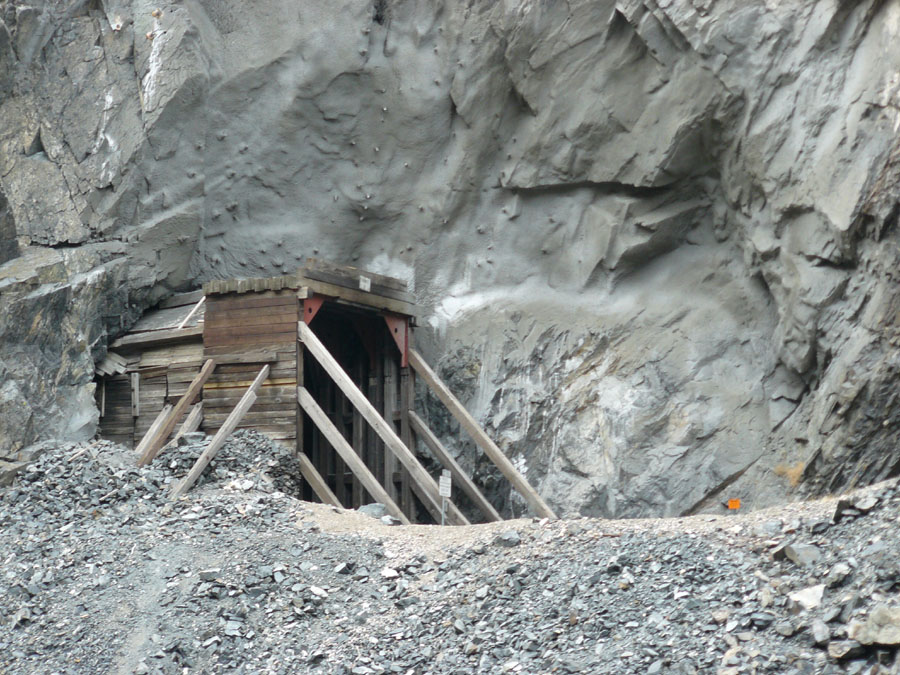 Location Taken: Wind River Canyon, Wyoming
Location Taken: Wind River Canyon, Wyoming
Time Taken: November 2012
Sometimes there’s a need for something,like a train line running through a certain canyon, blocked by the most simple of things, like a giant rock in the way. Just a simple issue, but oh so difficult to deal with.
That is the time to pull out the explosives, of course.
Works every time.
Well, at least if the job is in fact “remove that there rock”. Sometimes it’s a bit more challenging, like “remove some of that there rock”, or “remove just a little of that there rock”. Then you need special explosives.
Maybe even smaller explosives, if that’s not too blasphemous a thought.
Tunnel carving these days comes in two flavors: bore or boom. Either use a giant cutting machine that eats its way through the rock or just convert the rock into lots of little pieces to haul away.
Older tunnels, though, took a different path. For a long time, it was painstakingly chipping away the rock with a pickaxe and hoping it didn’t fall down on your head. Eventually controllable explosives became available, but even then, they weren’t THAT controlled, and might still drop the ceiling on your head.
This particular train tunnel is an older one, but I’m not sure how old. It’s the wrong shape and age for a bored tunnel (those are round, and usually have to be much longer in order for bringing in the machine to be cheaper than blasting an opening). It’s more of the age of explosives, but it is a rather short tunnel through an outcropping, and they may have decided not to risk the rock face falling and blocking the river. And this is in central Wyoming, which is very lightly populated even today, so explosives might have been difficult to get as well. So it’s entirely possible that this was chipped into the rock with simple tools.
They certainly weren’t too sure about the rock staying put. That’s why the elaborate wooden entrance. And if you look carefully at the rock above the entrance, you’ll notice it has a different texture. That’s plaster, carefully colored to match the surrounding rock. It’s there to make sure that section doesn’t fall unexpectedly. They’ll still have to check it regularly for cracks that indicate things are shifting, but it’s better than just having a rock randomly fall on a train.
Mind you, that’s rock as in ten-ton boulder, not rock as in pebble. So it’s a decent precaution to take, I’d say.
